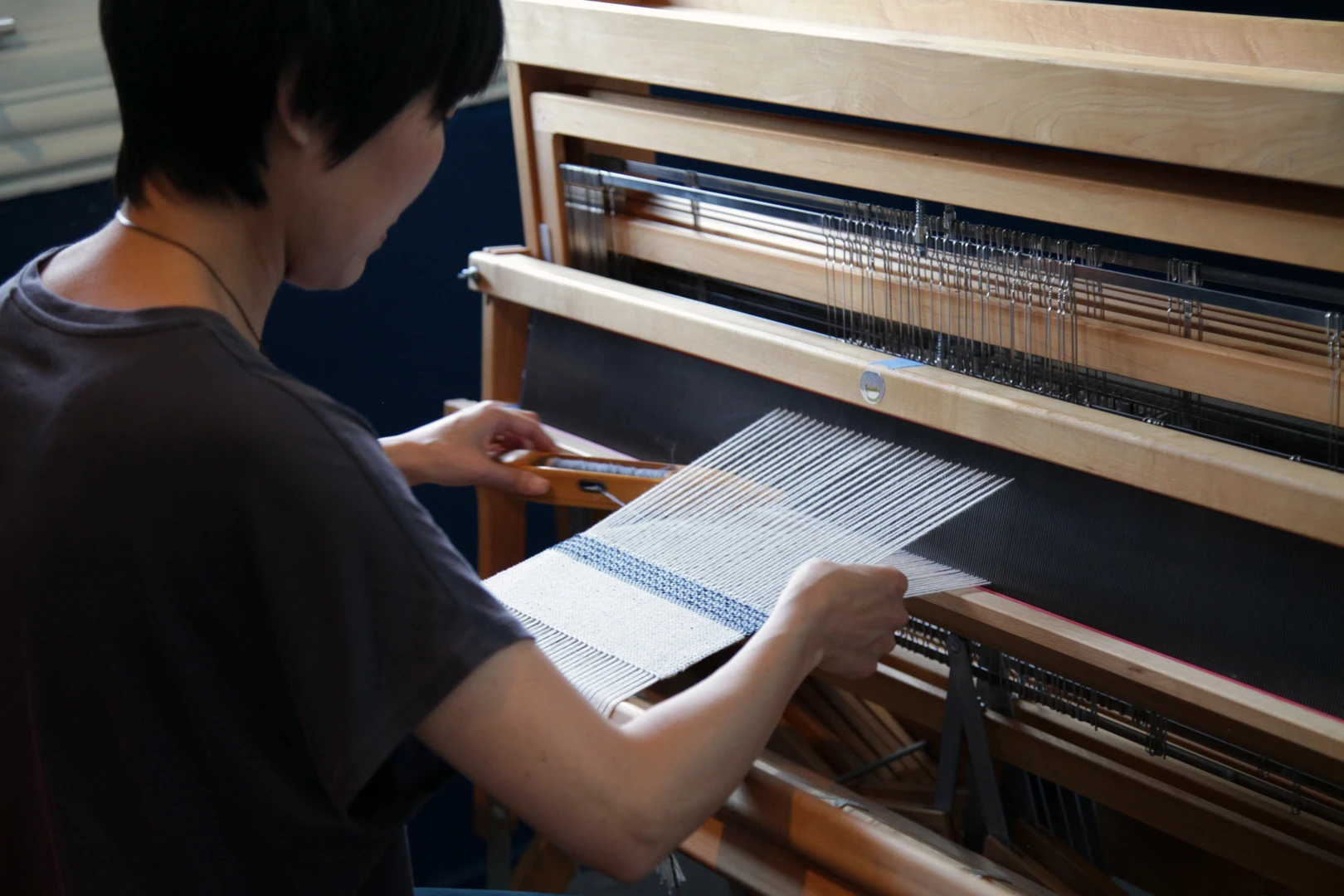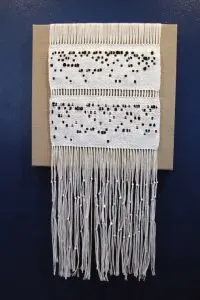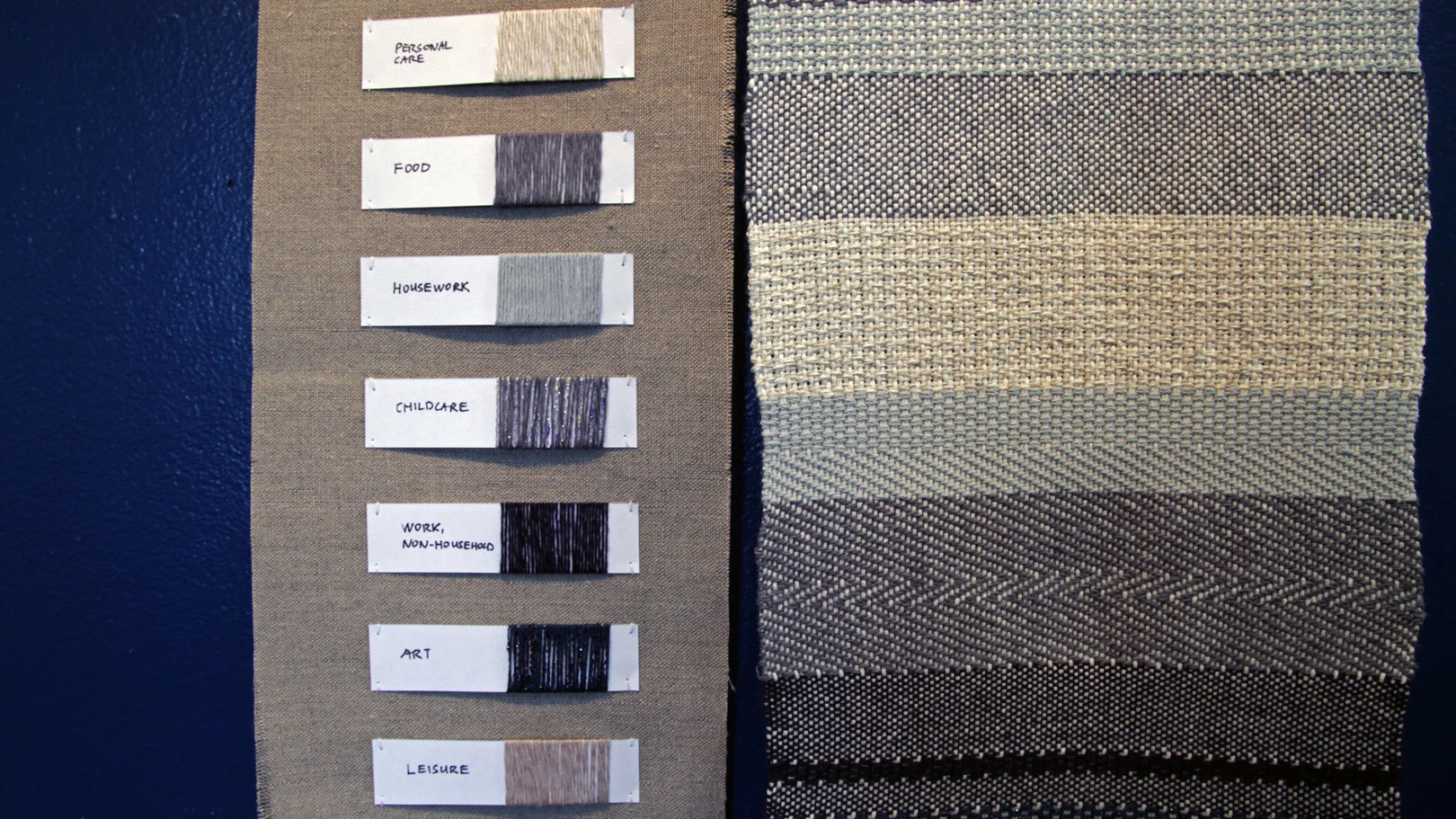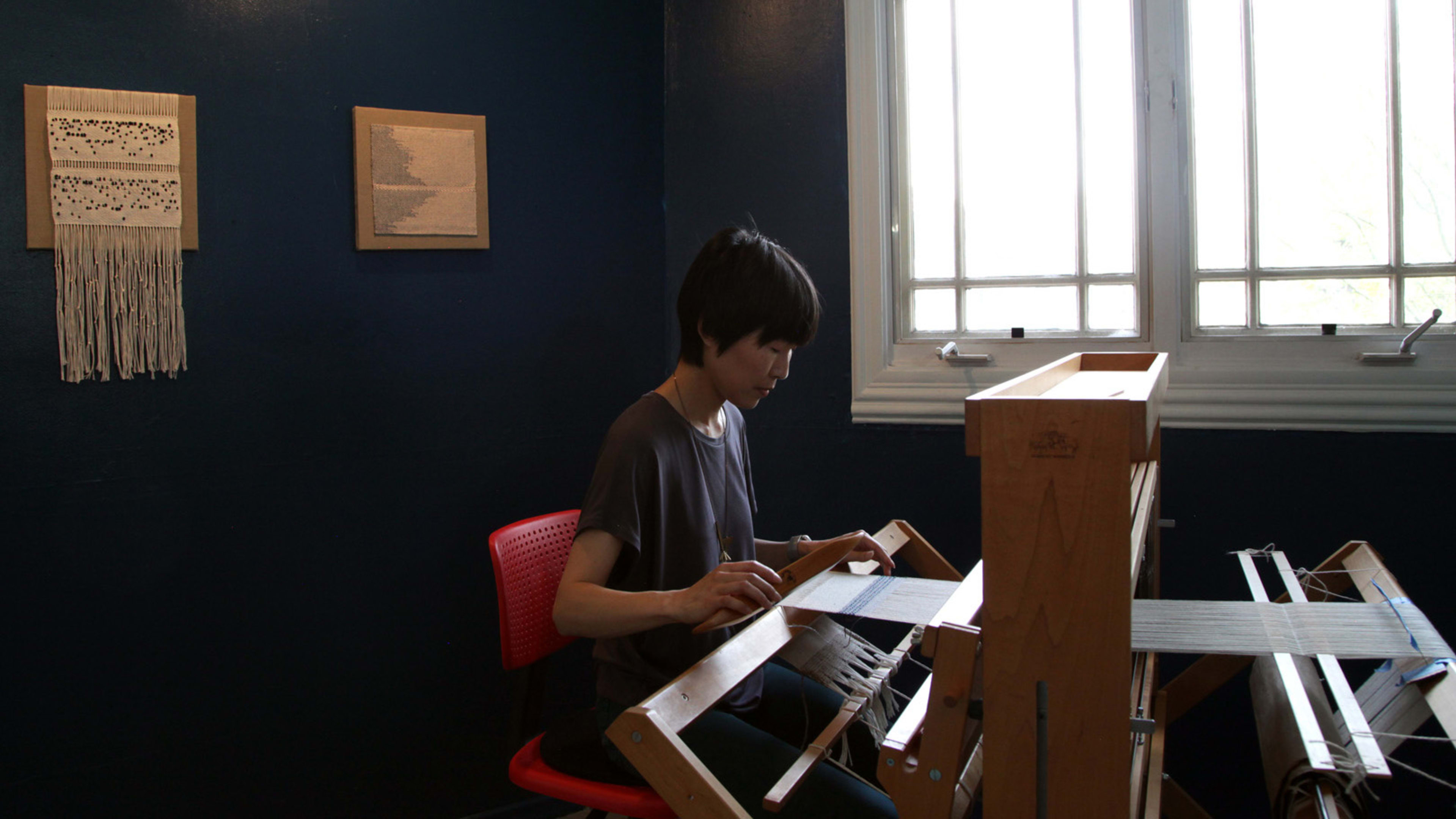Before the fast-fashion business model made it possible for clothing companies to churn out 700 shirts a day, textiles in the 19th century were created using a much slower and more mathematical process: the Jacquard loom. This machine, which used carefully designed punch cards to determine the sequence of weaving operations, created patterns out of thread based on a binary system. (Since woven textiles are created with interlocking threads, you can only ever see a warp or a weft thread on the surface, which is essentially a zero or a one.) The intricate Jacquard loom and its innovative punch card input method would go on to inspire the first general-purpose computer, and English mathematician Ada Lovelace is widely credited with publishing the first algorithm to be carried out by this Analytical Engine. As a result, the relationship between woven textiles and computer science was born, and women sat squarely at the intersection of this technical Venn diagram.
In an effort to tease out these overlapping industries, multimedia artist Ahree Lee has developed an interdisciplinary exhibit called Pattern : Code as part of her residency at the Los Angeles-based Women’s Center for Creative Work. The show is focused squarely on labor, especially undocumented or unrecognized work performed by people undervalued in society. Tracing the history of women in crafts to their more modern participation in computing was an exercise perfectly at home at the WCCW—a center for all kinds of feminist activity, research, and art making.

“Weaving has always been in the wheelhouse of women, and it took an incredible amount of time to weave and produce clothing and all the textiles needed for the household, like bedding and draperies,” Lee says. “Agricultural labor was more dangerous because of the large equipment so that tended to fall on the men, and that’s how this division of labor was formed. Women could do the textile labor at home where they could be watching over the children . . . it was easily interrupted.”
Lee explores domestic labor by creating weavings that illustrate self-generated labor data and research on statistics of women in STEM. One piece, a square tapestry with a triangular image called Disrupting the Industry, is a woven infographic depicting the number of women who got bachelor’s degrees in computer science between 1966 and 2010.

These qualities, which women were widely thought to naturally possess, were diligence, patience, and the ability to be detail-oriented—perfect for the tedious and technical work of both weaving and coding.
Another example of Lee’s thread-based data visualizations is her weaving called Ada, which is woven with a secret message.
“In that piece the dark dots represent the punches of a punch card, [which] I based on the standard IBM punch card, and I encoded a message in those two woven punch cards which is actually Ada Lovelace’s quote: ‘The Analytical Engine weaves algebraic patterns just as the Jacquard loom weaves flowers and leaves,'” says Lee. The multimedia artist uses a lot of the same fibers throughout her work, namely cotton and linen yarn.

Lee is also is spearheading public programs and hosting workshops throughout her four-month residency. The practice of female weaving workshops nods to the Bauhaus school of the early 20th century, where women who wanted to study art were invariably placed.
“The women weavers turned weaving as something pictorial or maybe not as rigorous as architecture or sculpture into something that was very architectural . . . a design activity that you can undertake for the benefit of industry and that’s production,” Lee says. “Weaving very much has a lot of engineering elements to it—you have to take into account the strength of fibers and how they’ll intersect.”
Throughout the course of her residency, Lee is also working on a visualization of her own labor; last year, the artist started meticulously tracking her time to figure out what she was doing each day. The result will be a series of weavings—seven in total, for each day of the week—that will depict all of the labor she engaged in between the hours of 6 a.m. and midnight. Using a color-coded key, with each hue representing a different type of work, Lee will divide her labor into six or seven different categories—from cooking, to childcare, to art.
“All these things are very ephemeral, they’re not tracked by society [because they’re] not a part of productivity,” Lee says. “Part of what I’m doing by documenting all this labor is making it tactile and visible and tracked . . . and part of my art output, and therefore valued.”
Recognize your brand’s excellence by applying to this year’s Brands That Matter Awards before the early-rate deadline, May 3.








